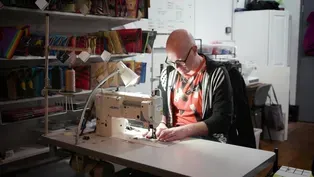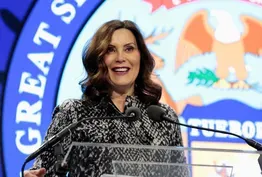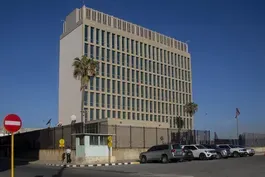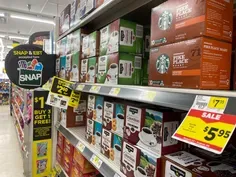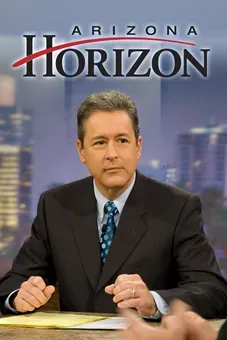
The challenging task crews face to clear collapsed bridge
Clip: 4/1/2024 | 4m 56sVideo has Closed Captions
The challenging task crews face to clear collapsed bridge and reopen Baltimore's port
Over the weekend, one of the largest floating cranes on the East Coast arrived in Baltimore to start clearing debris at the site of the collapsed Francis Scott Key Bridge. But before it can start removing steel and concrete, officials must remove a section of the bridge draped over the cargo ship. Geoff Bennett discussed the efforts with Lt. Gen. Scott Spellmon of the U.S. Army Corps of Engineers.
Problems with Closed Captions? Closed Captioning Feedback
Problems with Closed Captions? Closed Captioning Feedback
Major corporate funding for the PBS News Hour is provided by BDO, BNSF, Consumer Cellular, American Cruise Lines, and Raymond James. Funding for the PBS NewsHour Weekend is provided by...

The challenging task crews face to clear collapsed bridge
Clip: 4/1/2024 | 4m 56sVideo has Closed Captions
Over the weekend, one of the largest floating cranes on the East Coast arrived in Baltimore to start clearing debris at the site of the collapsed Francis Scott Key Bridge. But before it can start removing steel and concrete, officials must remove a section of the bridge draped over the cargo ship. Geoff Bennett discussed the efforts with Lt. Gen. Scott Spellmon of the U.S. Army Corps of Engineers.
Problems with Closed Captions? Closed Captioning Feedback
How to Watch PBS News Hour
PBS News Hour is available to stream on pbs.org and the free PBS App, available on iPhone, Apple TV, Android TV, Android smartphones, Amazon Fire TV, Amazon Fire Tablet, Roku, Samsung Smart TV, and Vizio.
Providing Support for PBS.org
Learn Moreabout PBS online sponsorshipGEOFF BENNETT: The U.S. Coast Guard has opened a temporary alternate channel for vessels involved in clearing debris at the site of the collapsed Francis Scott Key Bridge in Baltimore.
Over the weekend, one of the largest floating cranes on the East Coast arrived to the site, capable of lifting up to 1,000 tons.
But before it can start removing steel and concrete, officials have difficult work, like removing a section of the steel bridge that's draped over the cargo ship.
Today, Maryland Governor Wes Moore explained how large of an undertaking the cleanup is.
GOV.
WES MOORE (D-MD): We're talking about a situation where a portion of the bridge beneath the water has been described by unified command as chaotic wreckage.
Every time someone goes in the water, they are taking a risk.
Every time we move a piece of the structure, the situation could become even more dangerous.
We have to move fast, but we cannot be careless.
GEOFF BENNETT: President Biden is expected to underscore the government's commitment when he visits the area on Friday.
For more on the recovery efforts, we're joined by one of the key people in charge, Lieutenant General Scott Spellmon, commanding general of the U.S. Army Corps of Engineers.
Thanks so much for coming in.
LT. GEN. SCOTT SPELLMON, Commander, U.S. Army Corps of Engineers: Geoff, thank you for having us on the program.
If I could just begin by saying on behalf of all the men and women in the United States Army, certainly all the men and women in Army Corps of Engineers, our thoughts are with those families who lost loved ones in this terrible accident.
We're going to do everything in our part to help the governor achieve his number one priority, which is to return those loved ones to their families.
GEOFF BENNETT: Absolutely.
How are you and your team approaching the Herculean task of reopening that main channel, that main shipping lane?
Walk us through the process that you have envisioned.
LT. GEN. SCOTT SPELLMON: Right.
So, President Biden called me shortly after the bridge collapsed and wanted us to know that the Army Corps of Engineers' number one priority in this mission was to reopen that federal navigation channel.
Geoff, we're really going about this in three steps.
We know that channel is 700-feet-wide by 50-feet-deep.
And we know we have a large section of steel truss bisecting that channel.
We have to get that very heavy truss out of the channel, and then we have to get the concrete, the reinforcing bar, containers, any other wreckage that's at the bottom of the channel off the floor.
When these ships, like the Dali, come into the Port of Baltimore, they're drafting 48-and-a-half feet, and I just told you the bottom of that channel is 50 feet deep.
That's only 12 to 18 inches of clearance, and that's why it's important that we have a clean floor of that channel.
And then the second step, we will work with the Coast Guard and their counterparts.
We have to move the Dali.
That's right on the lip of that federal navigation channel.
We have to refloat that vessel and get it to a safe portion of the harbor.
And what that will allow us to do is restore normal two-way traffic into and out of the Port of Baltimore.
And then finally, we have to get the concrete, the asphalt, and the remaining structure off of the river bottom.
GEOFF BENNETT: And the stretch of bridge that remains draped across the cargo ship, that weighs something like 4,000 tons?
LT. GEN. SCOTT SPELLMON: That's correct.
GEOFF BENNETT: How long might this process take?
LT. GEN. SCOTT SPELLMON: What we're doing right now is, we're going through the math on each one of those members for that particular portion of the structure.
And if you can imagine each one of those beams like a rubber band, when we go to cut that rubber band, that steel, it will respond in the same manner.
But instead of snapping like a rubber band, think of thousands of tons of force.
So we want to know how it's going to behave before we put that first diver or that first steel worker up next to that beam to make a cut.
So we're doing all that math and analysis now around tables around Baltimore.
And our teams are also placing gauges on all of those steel members, so we understand the forces that are at play.
As you mentioned, as soon as we cut one member, all of those forces redistribute, and we have to go back and re-engineer and re-analyze before we make that next cut.
GEOFF BENNETT: This incident is obviously unparalleled, but are there any previous Army Corps Projects that can inform the work that you need to do in Baltimore?
LT. GEN. SCOTT SPELLMON: Certainly, back in 2007, the Corps was very much involved with the recovery of the I-35 collapse in Minneapolis over the Mississippi River.
And we have gone back and looked at lessons learned and things that we can take forward to this mission.
But I think, more recently, our ongoing recovery of the Maui wildfires,when we started off on that effort, we did not know if all the casualties had been found.
And it's much the same today.
We know we still have four workers missing, and we have to take a lot of care and a lot of diligence into our planning.
GEOFF BENNETT: Do you have all of the resources and equipment that you need?
LT. GEN. SCOTT SPELLMON: We have everything that we need to accomplish this mission.
GEOFF BENNETT: Lieutenant Spellmon, we appreciate you coming in, and our best to you and your team there.
Thank you.
LT. GEN. SCOTT SPELLMON: Thank you, Geoff.
Thank you.
Artist fuses design, accessory to create art you can carry
Video has Closed Captions
Clip: 4/1/2024 | 5m 21s | Rhode Island artist fuses design and accessory to create art you can carry (5m 21s)
Attack on Iran consulate in Syria escalates Mideast conflict
Video has Closed Captions
Clip: 4/1/2024 | 3m 32s | Attack on Iran consulate in Syria escalates conflict in Middle East (3m 32s)
Gov. Whitmer on efforts to protect reproductive rights
Video has Closed Captions
Clip: 4/1/2024 | 7m 40s | Gov. Whitmer discusses Democrats' efforts to protect reproductive rights (7m 40s)
'Havana syndrome' investigator on linking Russia to attacks
Video has Closed Captions
Clip: 4/1/2024 | 6m 4s | 'Havana syndrome' investigator on accusing Russia of targeting U.S. officials (6m 4s)
State laws create disparities in access to food benefits
Video has Closed Captions
Clip: 4/1/2024 | 9m 17s | State laws create disparities in access to government food benefits (9m 17s)
Tamara Keith and Amy Walter on abortion motivating voters
Video has Closed Captions
Clip: 4/1/2024 | 9m 20s | Tamara Keith and Amy Walter on how abortion rights could motivate voter turnout for Biden (9m 20s)
Providing Support for PBS.org
Learn Moreabout PBS online sponsorshipSupport for PBS provided by:
Major corporate funding for the PBS News Hour is provided by BDO, BNSF, Consumer Cellular, American Cruise Lines, and Raymond James. Funding for the PBS NewsHour Weekend is provided by...
